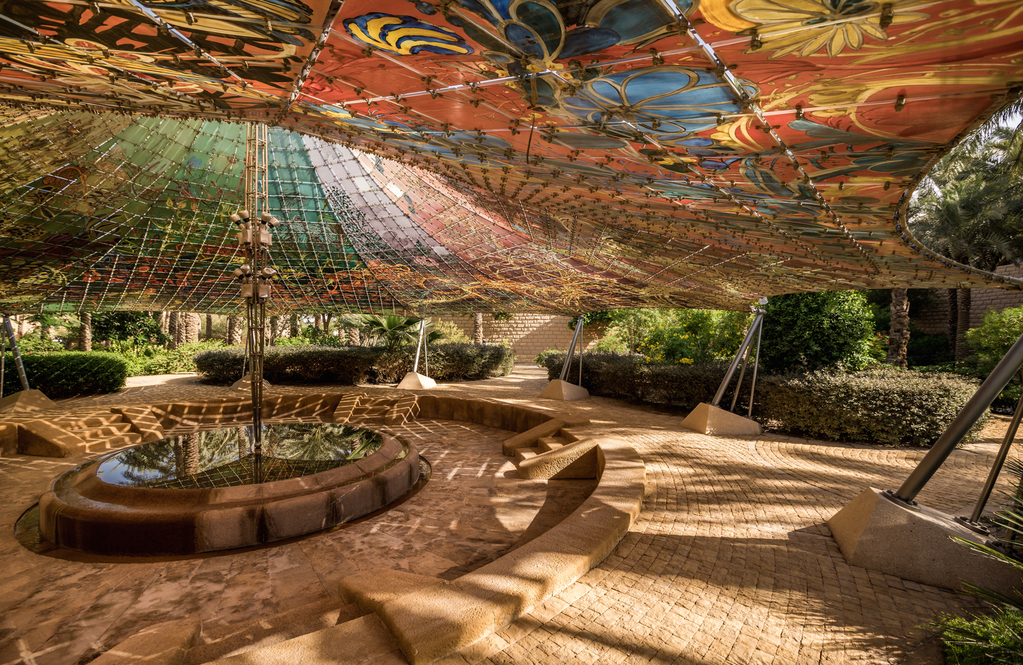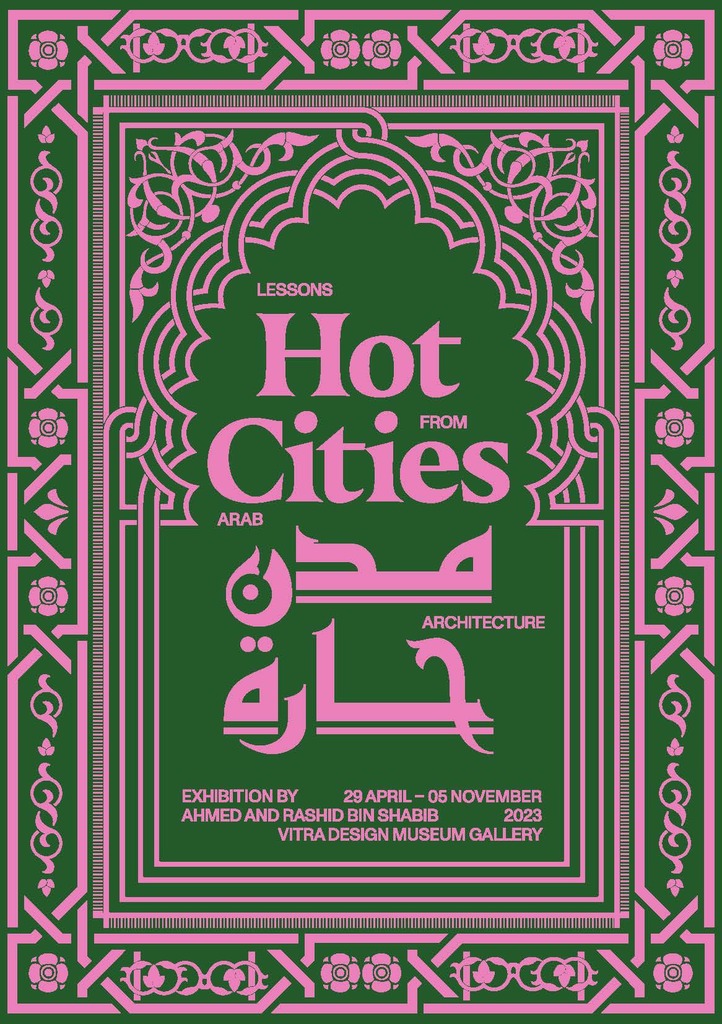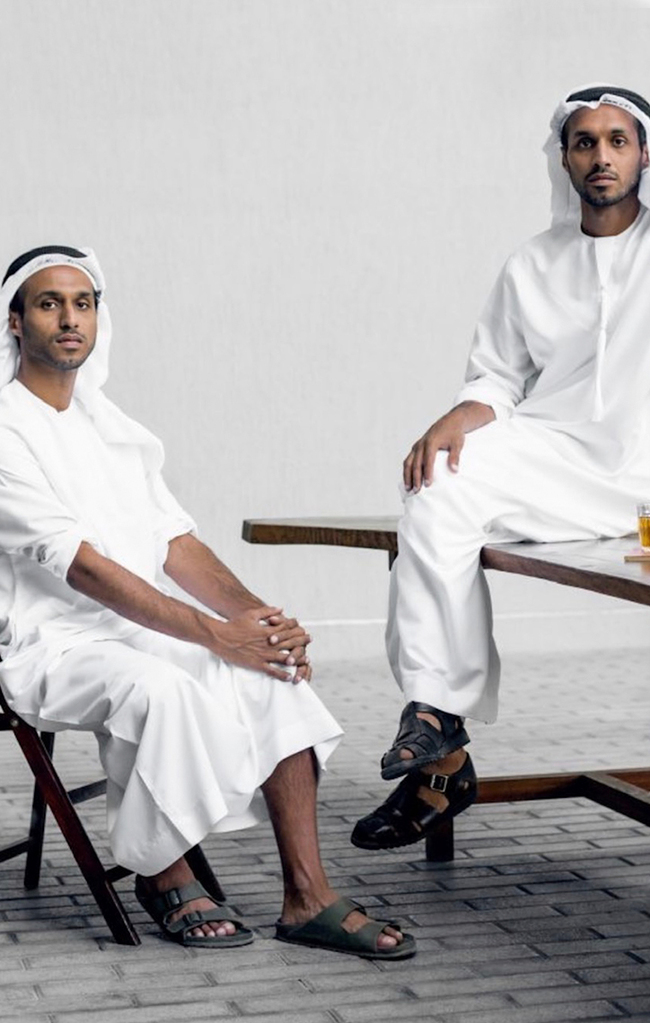Inspiring cities of the future

The little gallery of the Vitra Design Museum is filled with an arcade-like construction that calls to mind an inner courtyard. At the same time, the frame, draped with swathes of sand-coloured fabric and erected in front of a panoramic photo of a craggy desert landscape that fills the wall behind, is also suggestive of a tent.
There are 18 alcoves, each standing for a different Arab country, in which the building methods specific to that country are summarised on small information panels. They give an impression of what people in the Arab world have been doing for thousands of years to defy the often extreme heat.
Pockets are sewn into the fabric of these alcoves, containing cases of texts and photos. Visitors can sit down at small tables and gain an insight into the Middle East’s building strategies for combatting the heat.
Recurring elements include thick walls made of clay, an especially breathable traditional building material, high ceilings and domes, and shady interior courtyards to provide cool air.
Renewed interest in mud-brick constructions
These constructions were already being used in ancient Egyptian buildings, in places like the Siwa Oasis, and traditional mud-brick buildings of a similar shape are still being constructed today in the Nubian villages along the Nile.

You can also see a long continuity of such building methods in the Moroccan courtyard houses known as "Riads".
While – as you frequently find in traditional Arab architecture – the windows in their outside walls are kept small to shield the interior from the heat, the windows facing into the inner courtyard are generously proportioned.
These large openings increase air circulation to keep the buildings cool.
Alongside the other buildings typical of the Arab world – the casbahs you find in cities, screened off from the outside, and the fortress-like castles in mountainous rural regions – there are other architectural features that provide protection against the heat.
In Tunisia and the Gulf countries in particular, "wind towers" are commonly installed on roofs. They direct the flow of wind into the houses, and the use of damp cloths increases the cooling effect further.
The curators, twin brothers Rashid and Ahmed bin Shabib, who are in their late 30s, are themselves from one of the hottest countries in the region. In their home city of Dubai, summer temperatures of almost 50 degrees are the norm.
The brothers studied sustainable urban development at Oxford, and have made a name for themselves first and foremost through the lavishly illustrated culture magazine Brownbook, which they have been editing for the last 16 years.
One of the publication’s focuses is portraits of cities that are explicitly engaging with the characteristics of Arab and North African architecture.
Nature, climate and architecture are interwoven
The curators are keen to show how nature, climate and architecture are interwoven, and the relationship that exists between architecture and ecology.
As Rashid bin Shabib explains in conversation, their interest stems partly from their own biographies: “Well, we grew up in a hot climate, and live among our families with the traditional celebrations like Ramadan, where life goes on indoors and out. It’s part of our identity, and growing up with that has inspired us.”
The extensive documentary material from Brownbook magazine was also used to create their 2017 exhibition at the Vitra Design Museum, “Mudun مدن Urban Cultures in Transition”, which focused on the changing faces of Arab cities. In 2021, the Shabib brothers gained international attention with their contribution to the United Arab Emirates’ pavilion at the Venice Biennale, which was awarded the Golden Lion.

The pavilion drew attention to the ecological advantages of salt-concrete, and Ahmed and Rashid bin Shabib produced a detailed publication on the subject. It explains the complex environmental phenomenon of the Gulf’s “Sabkhas” (salt lakes), from which brine is extracted.
The two urban researchers regard their current exhibition in Weil am Rhein as a mobile archive, which they also hope to show in the UK and the Arab countries.
They are providing a subtle stimulus for European construction culture with, for instance, a small clay model that shows the roof of the Design Museum’s exhibition space, designed by star architect Frank Gehry, equipped with two wind towers, traditionally used for cooling in the architecture of the Gulf states.
But the aim of this exhibition, as Rashid bin Shabib is keen to stress, "is not to issue instructions or prescribe solutions."
"We want to give people the possibility of experiencing these various topics in multiple ways, so they can engage with them and learn from the experience."
The museum’s director Mateo Kries sees plenty of potential for learning, and not just on the theme of interior courtyards and mud as a construction material, which are in any case already growing in popularity even in the cooler regions of Europe.
In Germany today, more mud-based building materials are being used than in any other European country, and in Berlin environmental activists are campaigning with increasing vigour against the sealing-up of the city’s many interior courtyards, and in favour of retaining them.
Mateo Kries hopes this exhibition project will also prompt some reflection on the widespread "sense of superiority" you come across in Germany with regard to the global South and its architecture.
The exhibition, Kries says, presents a style of construction that has advantages over our own: "We’ve built using concrete, and hi-tech solutions. These are vulnerable solutions, and are often also really questionable when it comes to the climate. Whereas here we have an architecture that shows us how we can return to a more natural way of dealing with climate change."
© Qantara.de 2023
Translated from the German by Ruth Martin
The exhibition "Hot Cities: Lessons from Arab Architecture" runs until 5 November 2023. A detailed exhibition catalogue is under production.